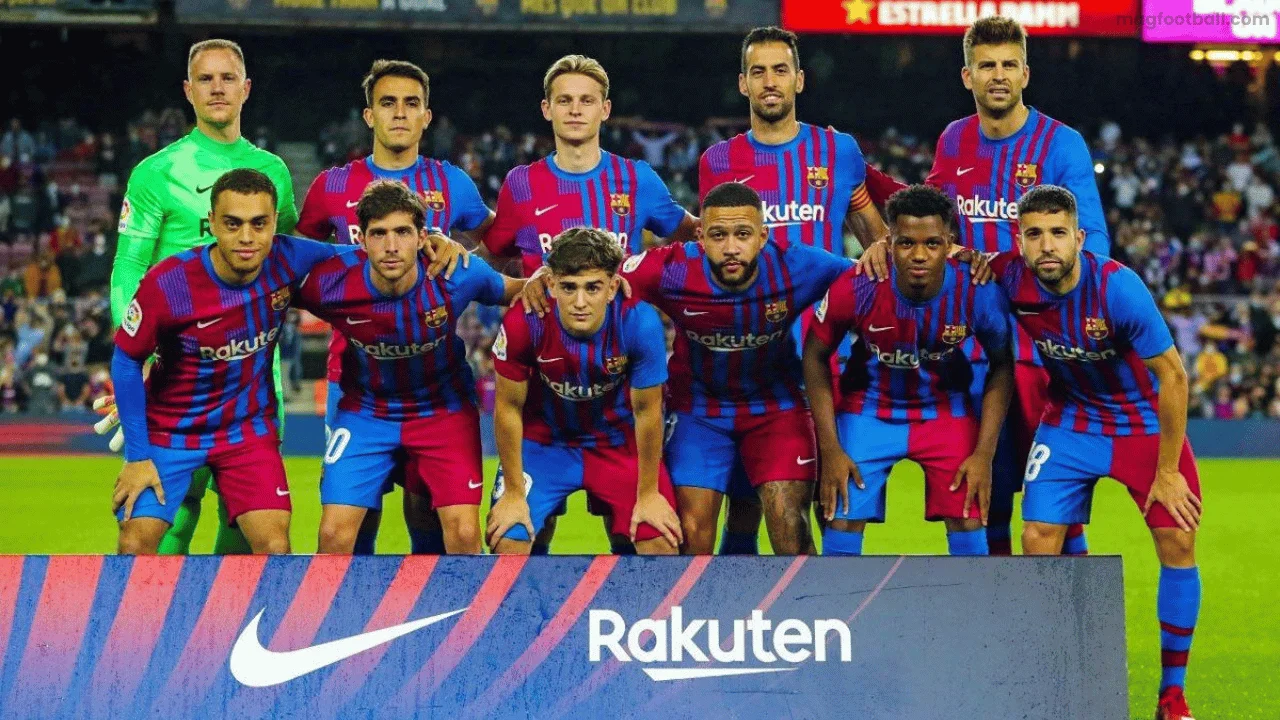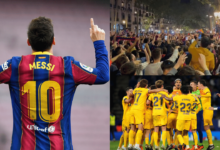The Tactical Evolution of FC Barcelona: From Tiki-Taka to Modern Day

FC Barcelona is a club that has become synonymous with tactical innovation and a unique playing philosophy. Throughout its history, the club has been home to some of the brightest footballing minds, and its tactical evolution has shaped the modern game. The most iconic of these tactics is undoubtedly the Tiki-Taka style introduced by Johan Cruyff and perfected under Pep Guardiola.
Table of Contents
The Birth of Tiki-Taka: Johan Cruyff’s Influence
The foundation of Barcelona’s tactical philosophy can be traced back to the legendary Johan Cruyff. In the late 1980s, Cruyff brought his “Total Football” philosophy to the club, which emphasized fluid movement, positional interchange, and possession-based play. This style of play laid the groundwork for what would later become known as Tiki-Taka, a short-passing, high-possession style that focuses on controlling the ball and wearing down opponents through constant movement.
Cruyff’s implementation of this style at Barcelona revolutionized the club and brought immediate success. Under his leadership, Barcelona won the 1992 UEFA Champions League, marking the club’s first European Cup victory. His emphasis on youth development and possession football became ingrained in the club’s DNA and would shape the future of Barcelona for decades to come.
Pep Guardiola’s Barcelona: The Golden Era of Tiki-Taka
While Cruyff laid the foundation, it was Pep Guardiola who took Tiki-Taka to new heights. Guardiola’s appointment as Barcelona’s head coach in 2008 marked the beginning of one of the most successful periods in the club’s history. Under his guidance, Barcelona won numerous titles, including three La Liga titles and two UEFA Champions League trophies (2009, 2011).
Guardiola’s version of Tiki-Taka was characterized by short, quick passes, positional play, and high pressing. Central to this system were players like Xavi Hernández, Andrés Iniesta, and Lionel Messi, who orchestrated play with their technical brilliance and intelligence. The 4-3-3 formation, with Messi as a false nine, allowed Barcelona to dominate possession and create endless opportunities to score.
Guardiola’s Barcelona played with a possession-based philosophy where the team often had over 70% of the ball. The emphasis on pressing high up the field and winning the ball back quickly after losing possession became key components of Barcelona’s identity during this era. Guardiola’s tactics not only brought success but also transformed football, with many teams worldwide trying to replicate Barcelona’s style.
The Decline of Tiki-Taka and Tactical Adaptations
As successful as Tiki-Taka was under Guardiola, the style began to face challenges in the years that followed his departure. Teams learned how to counter Barcelona’s possession-based football by sitting deep and absorbing pressure. Jose Mourinho’s Inter Milan famously knocked Barcelona out of the 2010 Champions League, utilizing a deep-lying defensive block and quick counter-attacks.
Following Guardiola’s departure in 2012, Barcelona saw a series of tactical adjustments. Tito Vilanova and Gerardo Martino tried to maintain the principles of possession football, but the team struggled to replicate Guardiola’s dominance. The arrival of Luis Enrique in 2014 marked a significant tactical shift. While still retaining some elements of Tiki-Taka, Enrique introduced a more direct approach, prioritizing quick transitions and counter-attacks.
During Enrique’s tenure, Barcelona utilized a 4-3-3 formation but relied more heavily on the attacking trio of Lionel Messi, Luis Suárez, and Neymar—collectively known as MSN. The team still focused on possession, but there was a greater emphasis on individual brilliance and quick counter-attacks, making Barcelona more adaptable to different opponents. This tactical evolution led to the club’s 2015 Champions League triumph, marking a return to the pinnacle of European football.
The Valverde Era: Pragmatism and Defensive Solidity
Under Ernesto Valverde, Barcelona adopted a more pragmatic approach. While still valuing possession, Valverde’s Barcelona focused more on defensive solidity and controlling games without overcommitting in attack. Valverde often utilized a 4-4-2 formation, with Messi and Suárez leading the line.
Valverde’s tactics proved effective domestically, as Barcelona won back-to-back La Liga titles (2018, 2019). However, the team struggled in Europe, suffering humiliating defeats against Roma in 2018 and Liverpool in 2019, where defensive collapses cost the team a chance at further Champions League glory. These failures highlighted the limitations of Valverde’s tactical approach and signaled the need for further evolution.
The Modern-Day Barcelona: Tactical Rebuilding Under Xavi
In recent years, Barcelona has been in a state of tactical transition. Following the short tenures of Quique Setién and Ronald Koeman, Barcelona has turned to club legend Xavi Hernández to guide the team back to its roots while incorporating modern tactical innovations. Xavi, a product of the La Masia academy and one of the key figures of Guardiola’s Tiki-Taka era, is now tasked with rebuilding Barcelona’s identity.
Xavi’s approach emphasizes a return to possession-based football, but with a modern twist. His tactics incorporate vertical passing, quick transitions, and high pressing, blending the best of Tiki-Taka with modern attacking principles. Players like Pedri, Gavi, and Frenkie de Jong are central to his plans, as they embody the technical qualities and intelligence needed to execute Xavi’s vision.
Additionally, Xavi’s Barcelona places a renewed focus on youth development and building from within, a hallmark of the club’s philosophy. The revival of La Masia talents is seen as key to Barcelona’s long-term success.
Barcelona’s Tactical Future: Balancing Tradition with Innovation
As Barcelona moves forward, the club faces the challenge of balancing its tactical traditions with the demands of modern football. While possession football will always be at the heart of Barcelona’s identity, the team must continue to adapt to an ever-evolving game. The growing emphasis on physicality, speed, and tactical versatility in modern football means that Barcelona must blend its historical strengths with new ideas to compete at the highest level.
In the coming years, Barcelona’s ability to evolve tactically will be crucial to its success both domestically and in Europe. The club’s financial difficulties have forced it to rely more heavily on youth development, making tactical coherence and player development more important than ever.
Conclusion: The Evolution of Barcelona’s Tactics
From Johan Cruyff’s Total Football to Pep Guardiola’s Tiki-Taka, FC Barcelona has been at the forefront of footballing innovation for decades. The club’s tactical evolution is a testament to its commitment to possession-based football, but also to its willingness to adapt to the challenges of modern football. With Xavi Hernández now at the helm, Barcelona’s future looks bright as the club seeks to blend its rich history with the demands of the modern game.
Barcelona’s tactical evolution is not just a reflection of the changing nature of football but also a symbol of the club’s enduring philosophy. As the game continues to evolve, so too will Barcelona, remaining a beacon of tactical innovation and footballing excellence.



